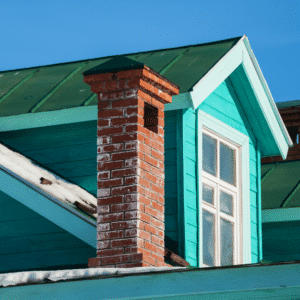A fireplace can be a cozy addition to any home, providing warmth and a comforting ambiance during cold months. However, when the fireplace is not in use, it’s essential to close the chimney flue to prevent energy loss and maintain indoor temperature. Closing the flue properly also keeps unwanted pests, debris, and weather elements out. In this guide, we will walk you through the steps on how to effectively close the chimney flue.
Why Is Closing the Chimney Flue Important?
Closing the chimney flue is crucial for several reasons:
Energy Efficiency: An open flue allows warm indoor air to escape and cold outdoor air to enter, leading to increased heating costs.
Prevents Drafts: Closing the flue prevents drafts from entering your living space, maintaining a comfortable temperature.
Safety Measures: It reduces the risk of accidental fires by ensuring embers or sparks do not escape through the chimney.
Keeps Pests Out: Closing the flue prevents birds, insects, and animals from entering and nesting in the chimney.

Step-by-Step Guide to Closing the Chimney Flue
Step 1: Ensure the Fire is Completely Out
Before closing the flue, ensure that the fire in your fireplace is completely extinguished. There should be no remaining embers or hot ashes.
Step 2: Locate the Flue Lever or Handle
The flue lever or handle is usually located inside the fireplace. It’s a metal lever or handle that controls the flue’s position.
Step 3: Pull the Flue Lever or Handle
Pull the flue lever or handle towards you or in the designated direction to close the flue. You’ll often hear a distinctive sound when the flue is fully closed.
Step 4: Check for Proper Closure
After closing the flue, make sure it is completely sealed. You can do this by looking up the chimney to see if the opening is closed or by feeling for drafts around the fireplace.
Step 5: Use a Chimney Cap
Consider installing a chimney cap for added security and protection. A chimney cap prevents debris, animals, and precipitation from entering the chimney even when the flue is closed.
Step 6: Inspect Regularly
Make it a habit to check the flue and chimney periodically to ensure that it remains closed and functional. Regular inspections will help identify any issues early on.
Additional Tips for Maintaining a Closed Flue
Regular Cleaning: Clean your chimney and fireplace regularly to maintain proper airflow and ensure efficient functioning when you use it.
Install a Damper: If your fireplace doesn’t have a flue lever, consider installing a damper. A damper allows you to control the airflow and close off the chimney effectively.
Professional Inspection: Have your chimney and fireplace inspected by a professional annually to ensure it’s in good condition and safe to use.
Seal Cracks and Leaks: If you notice any cracks or leaks in the flue or fireplace, seal them to prevent air leakage even when the flue is closed.
In Conclusion
Closing the chimney flue when your fireplace is not in use is a simple yet essential step in maintaining energy efficiency, safety, and overall comfort in your home. Follow these steps to ensure your chimney flue is closed effectively, saving energy and keeping your home cozy and secure. Regular maintenance and inspections will prolong the life of your fireplace and chimney while ensuring they function optimally when needed.
